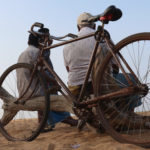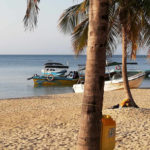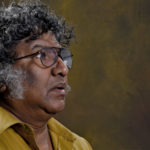A Musical, Maritime Mystery:
Seeking The Singing Fish Of Batticaloa
A Batticaloa lagoon is famed for its mysterious singing fish. So far though, nobody has been able to work out what is making the odd noises from the deep.
According to the local fishing community around the Kallady Bridge in Batticaloa, the lagoon here is home to mysterious singing fish. They call the fish “oorie coolooroo cradoo” which translates to “crying shells”. Researchers have tried to find out what makes the sounds and have come to assume that it is being made by some kind of marine life, perhaps shellfish or a certain kind of fish gill, although they cannot be sure exactly what. Another theory says the noise is produced by water flowing in some strange way on the lagoon floor.
An elderly man who lives near the Kallady Bridge, Bandara Gobaru, 66, believes in the singing fish. And he is convinced that, in accordance with all the stories, one can hear the fish singing when rowing on the lagoon during a full moon. He has heard the fish singing once before and he says they sound like the cry of a cat.
Gobaru has lived his whole life near the Kallady Bridge and he says that the visitors who come to see the ancient iron bridge, completed in 1924 by the country’s then-British colonial rulers, always ask about the singing fish. It is not a strange sight to see tourist boats among the local fishing fleet. Over the past few years, after civil war and natural disaster struck, many locals had generally forgotten about the mysterious singing fish stories, Gobaru says.
/
“Fisherfolk here could really only worry about the catch,” Gobaru recounts. “They could not spare any time to try to see if fish were singing, they were just trying to make a living.”
Gobaru is worried that the events of the recent past as well as pollution and increased traffic on the lagoon have killed off the singing fish. The tsunami of 2004 caused much damage and during the civil war, there was a curfew in the area. The lagoon itself became a high security zone and the fishing community aged until they were no longer able to work.
Father Lorio, a Jesuit priest who lives in Batticaloa, has been trying to understand the mystery of the singing fish since the 1950s. He was present at one of the earliest known recordings of them.
“I asked the fishermen for details and so one day I toured the lagoon in one of the boats hoping to hear the fish sing,” Lorio told the Catamaran. “I heard a sound and I recorded it.”
Despite the fact that the cleric has since misplaced the tapes of the sounds, he remains one of the main credible witnesses to the fact that the singing fish actually exist.
One of the other individuals who successfully recorded the singing fish was C. de S. Kulatillake, a well-known researcher into folk music in the country and broadcaster.
“Sounds were recorded by C. de S. Kulatillake’s research unit,” says local veteran musician Rathna Sri Wijesinghe. “And there were attempts by local musicians to use the sounds of the singing fish in their own creations.” Wijesinghe himself is convinced that the singing fish exist.
Most recently, a group of young people from Batticaloa have joined in the search for the singing fish.










